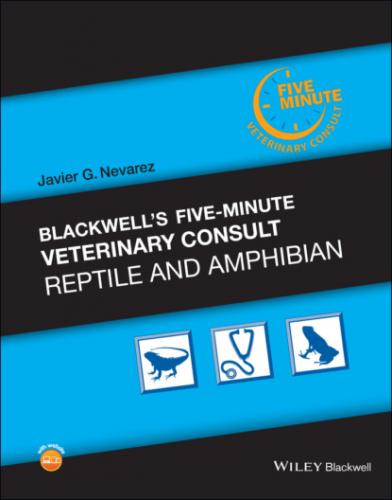DRUG(S) OF CHOICE
Discontinuing supplementation of non‐ beta carotene vitamin A.
Other treatment focuses on supportive therapy and managing secondary infections.
Systemic fluid therapy may be needed but with the goal of transitioning to oral fluids or passive soaking.
Pain management can be important.
Judicious topical use of silver sulfadiazine cream for epidermal ulcers can help.
Vitamins E and K and taurine administration have all been shown to help mitigate hypervitaminosis A in rat studies, but no studies are available in reptiles.
PRECAUTIONS/INTERACTIONS
Oversupplementation of vitamin A can have negative interactions with other fat‐soluble vitamins (D, E, K) leading to either decreased absorption or excess accumulation.
PATIENT MONITORING
Reassessment of clinical manifestation
Review of current diet plan
Repeat liver biopsy if feasible
EXPECTED COURSE AND PROGNOSIS
In the acute form, hypervitaminosis A generally resolves quickly and clinical manifestation is uncommon (except in very high overdosing).
The chronic form is most common. Clinical resolution can take many months, with most dermatological manifestations resolving, although skeletal and hepatic damage may be permanent.
COMMENTS
N/A
ZOONOTIC POTENTIAL
N/A
SYNONYMS
N/A
ABBREVIATIONS
OTC = over the counter
UVB = ultraviolet B
Suggested Reading
1 Chen LP, Huang CH. Effects of dietary β‐carotene levels on growth and liver vitamin A concentrations of the soft‐shelled turtle, Pelodiscus sinensis (Wiegmann). Aquacult Res 2011;42:1848–1854.
2 Chen LP, Huang CH. Estimation of dietary vitamin A requirement of juvenile soft‐ shelled turtle, Pelodiscus sinensis. Aquacult Nutr 2015;21:457–463.
3 Mans C, Braun J. Update on common nutritional disorders of captive reptiles. Vet Clin North Am Exot Anim Pract 2014;17(3):369–395.
Author Eric Klaphake, DVM, DACZM
Hypoglycemia
DEFINITION/OVERVIEW
Abnormally low blood glucose concentration. In most species, glucose concentrations fluctuate; normal concentrations range from 60 mg/dl to 200 mg/dl (3.3–11 mmol/l), but lower values could be normal.
ETIOLOGY/PATHOPHYSIOLOGY
Exhaustion, starvation, malnutrition
Septicemia
Hepatobiliary disease
Pancreatic disease
SIGNALMENT/HISTORY
Animals with severe systemic disease may be predisposed.
Long‐lasting anorexia
CLINICAL PRESENTATION
Weakness
Tremors
Loss of righting reflex
Torpor
Unresponsiveness
RISK FACTORS
Husbandry
Poor nutritional status
Others
Systemic disease
Blood glucose levels below 20 mg/dl (1.1 mmol/l) indicate hypoglycemia.
DIFFERENTIAL DIAGNOSIS
N/A
DIAGNOSTICS
Detection of hypoglycemia in a clinically healthy animal should not cause concern.
In animals with clinical signs and hypoglycemia, attempts should be made to rule out septicemia, hepatobiliary disease, and pancreatic neoplasia.
Glucose may be artificially low in blood samples stored for a prolonged period prior to separation of plasma/serum.
PATHOLOGICAL FINDINGS
Depends on underlying etiology
• The pancreas should be thoroughly evaluated.
APPROPRIATE HEALTH CARE
N/A
NUTRITIONAL SUPPORT
Consider energy‐rich nutritional support by stomach tube in cases of anorexia.
CLIENT EDUCATION/HUSBANDRY RECOMMENDATIONS
If related to poor nutrition and management, educate clients on appropriate feeding practices.
DRUG(S) OF CHOICE
Treat underlying disease
Supportive administration
